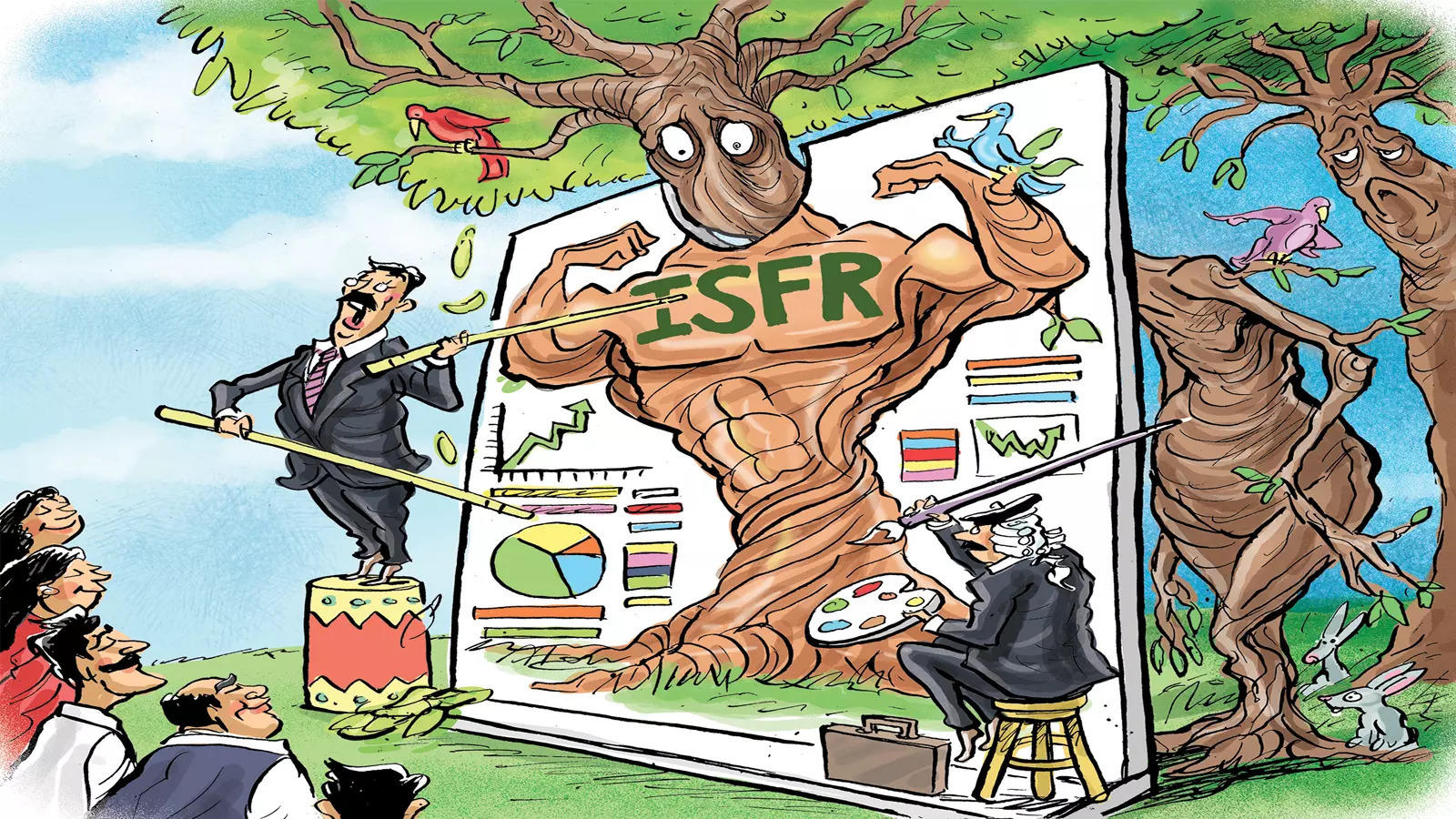This article originally appeared in TOI+

How to read biennial forest surveys? The best way is decadal data produced by same methods
India State of Forest Reports (ISFRs) are published every two years. And, every ISFR shows an increase in the forest cover compared to the previous one. ISFR 2021, released last week, too shows an increase of 1,540 sq kms of forest area – an area slightly more than that of Delhi – compared to ISFR 2019.
But is this biennial good news the correct way to assess the state of our forests? Can we evaluate the health of our forest, and how government policies have affected it, in such a short time? The answer is no. We need at least a decade to judge whether forests have improved or deteriorated. So instead of getting into the quagmire of biannual assessment, let’s check how India’s forest has fared on a decadal scale.
ISFRs, despite their many shortcomings, contain a vast amount of data on growing stocks (the total volume of all trees), carbon stock (total amount of carbon stored in the forest), forest cover etc. Though all data is not available for all years, there is enough to enable a coherent analysis of the health of our forests. But before we make any comparison, it is necessary to understand the technology used for the forest assessment and its implications on numbers.
The assessment of forests is done using satellites along with ground-truthing. Over time, satellite technology has improved vastly, and so has the technology to produce ISFRs. Since 2001, high-resolution satellite data and digital interpretation have been used for ISFRs. This technology is so sophisticated that it can capture tree cover on even 1 hectare of land.
Before 2001, the satellites had lower resolution and could catch tree cover only on a large piece of land. So, to get a correct picture of the state of the forest, the comparison should only be made with data generated by similar technology. Fortunately, we have comparable data for the past two decades, viz, ISFR 2001 onwards, to make a decadal-scale assessment.
Forest cover: ISFR 2021 recorded the total forest cover in the country as 7,13,789 sq kms, ie, 21.71% of the country’s geographical area. Out of this, dense forests (considered as good forest) are 4,06,669 sq kms and open forests (deemed to be degraded forests) 3,07,120 sq kms. In comparison, ISFR 2001 recorded the total forest cover as 6,75,538 sq kms, ie, 19.5% of the geographical area. An area of 4,16,809 sq kms had dense forest cover, and 2,58,729 sq kms was open forests.
In the last 20 years, therefore, the country’s forest cover has increased by 38,251 sq kms – an area equal to the size of Kerala. But, during this period, dense forests have reduced by 10,140 sq kms (similar to the area of Tripura), and open forests have increased by 48,391 sq kms (equal to the size of Punjab). So, while the total forest cover has grown, they have increased mainly in the degraded forest category; good quality forests have reduced.

Recorded forest area: RFA are lands recorded as forests in government records and are managed by the forest departments. ISFRs have data on forest cover inside RFA and outside since 2011, and it reveals the following:
- RFA in the country is 7,75,288 sq kms or 23.58% of the country’s geographical area. But the forest cover exists only on 5,16,630 sq kms. That is, only two-thirds of the forest area under government control have forests on them. There is little data on what exists on the remaining one-third – an area equal to the size of UP
- In the last 10 years, forest cover inside RFA has reduced by 14,071 sq kms, while it has increased by 35,779 sq kms outside. So, forest cover is expanding on private land (mainly as plantation) and decreasing in forests managed by the government
Volume of all trees: Growing stocks in forests have reduced from 4,781.4 million cubic metres (cu-m) in 2003 to 4,388.15 million cu-m in 2021 – a decline of 8% in the last two decades. This indicates a significant degradation of the forest.
Overall, contrary to the impression given by the ISFRs, it is pretty clear that the health of our forests has declined significantly in the last two decades. The increase in forest cover shown in subsequent ISFRs is mainly due to the growth in plantations on private land. Forest areas, on the other hand, have lost large tracts of rich biodiverse forests and have experienced significant degradation. All in all, there is little to cheer about India’s forests.
The question then is, how do we restore our degraded forests, preserve biodiversity and wildlife, meet the livelihood demands of 300 million people living in and around forests and fulfil our pledge to mitigate climate change?
It is clear that the current forest administration, which the British created to exploit forest resources, cannot solve the myriad of challenges facing our forests. Most researchers are now convinced that India needs an entirely new paradigm of forest management in which forest-dependent communities will have a significant role in forest management, with the forest department as a facilitator and enabler.
There is enough evidence to show that such a shift has yielded impressive results in many countries. Currently, over 500 million hectares of forests in the world (1.5 times India’s area) are under some form of community control.
Forest departments in these countries have reversed their roles from being owners and regulators of forests to becoming facilitators in community-managed forests. Our forest administration, too, will have to shed its colonial hangover to enable India’s forests to flourish.
The writer is CEO of the International Forum for Environment, Sustainability and Technology (iFOREST)
Chandra Bhushan is one of India’s foremost public policy experts and the founder-CEO of International Forum for Environment, Sustainability & Technology (iFOREST).
